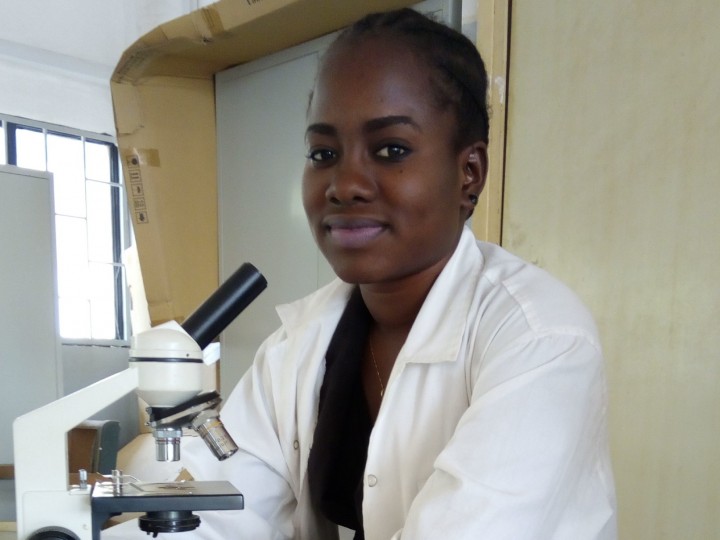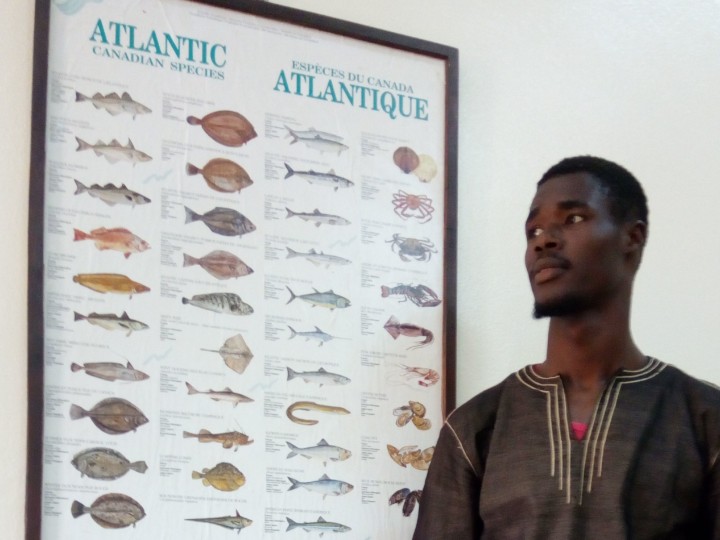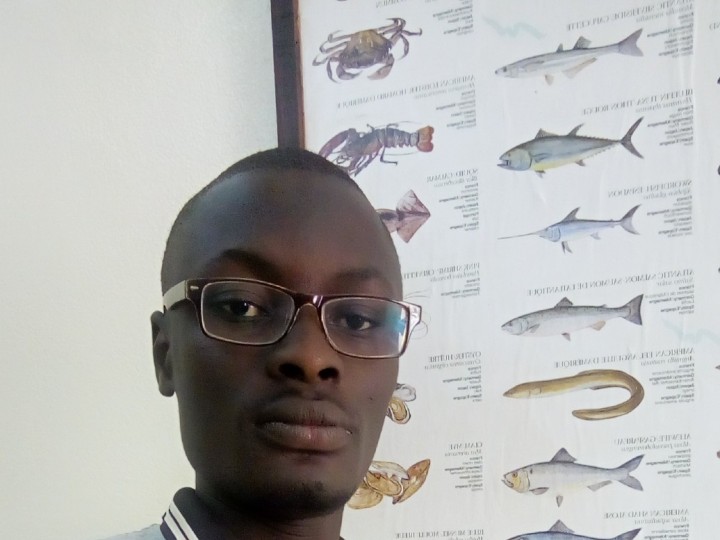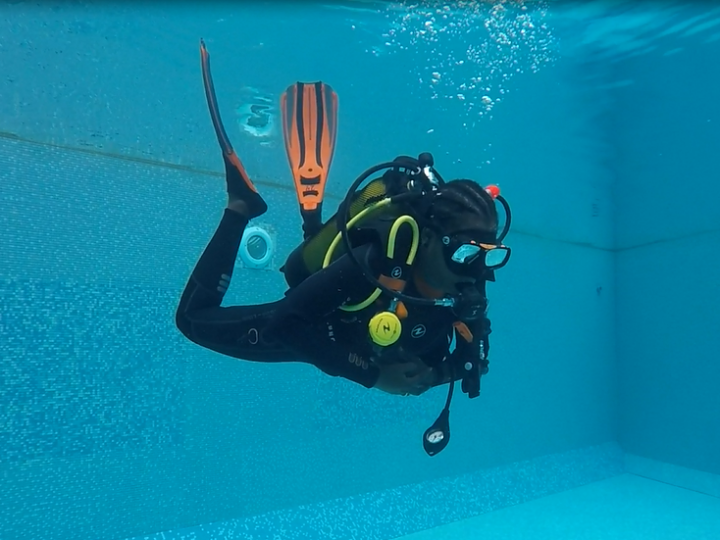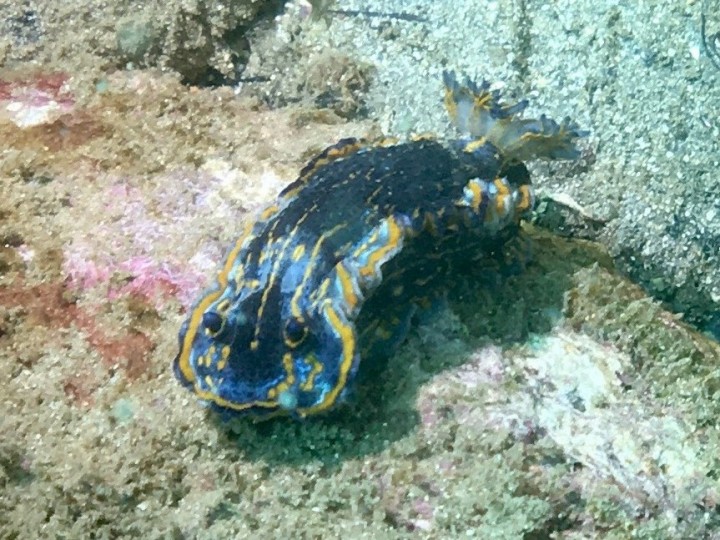On your marks… study, dive, protect!, Senegal
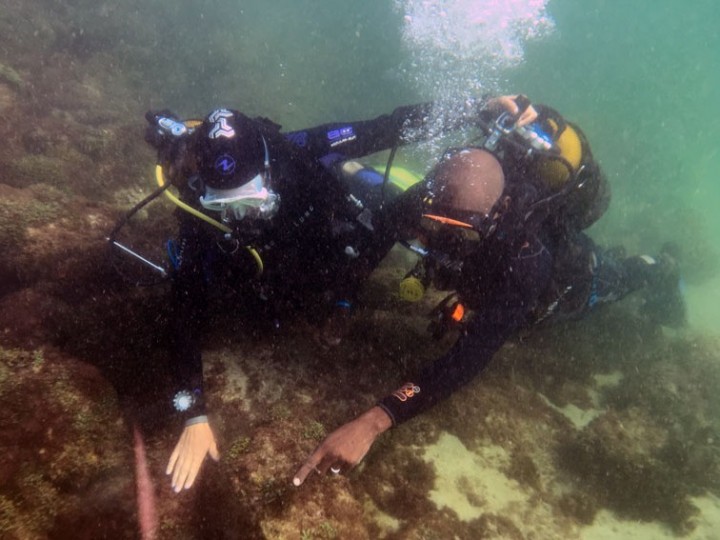
Summary
It is to complete the training of young future African champions in the protection of marine ecosystems in West Africa by teaching them to scuba dive.
Learning is good: putting it into action is better!
Too often, students in West Africa do not have the chance to go and see, discover and try out what they are learning about in their lectures and books.
Imagine learning a language that you never speak; an instrument that you never play … it is incredible!
This is even more true when it concerns the underwater environment. However, this is what two of the Msc. students in 'Aquatic Eco-systems Management', Aliou Ngom and Amadou Sene want and who are keen to 'acquire the basics in scuba diving to be able to have in-depth knowledge' (no pun intended). The problem is that they cannot afford to do this, and IUPA (the University Fishing and Aquaculture Institute) does not have a big enough budget to offer this to its students.
Ecofund, the students' professor, Malick Diouf and Nathalie Cadot, project partner, will focus on a team of three (3) of the 15 Msc. students at IUPA (Cheik Anta Diop University, Dakar), who, after a tough selection procedure, will be chosen to become 'champions' for their Masters and ocean protection spokespersons during World Ocean Day and other upcoming events.
Chosen for their strong motivation and skills, the three (3) students trained in scuba diving will enrich their curriculum with their new skills; in particular through their second year internship, and the publishing of articles and presentations.
Beyond helping them to build a future as expert researchers in the area of ocean protection, you will contribute by giving them a unique experience; a real physical challenge for many of them. They will share their emotions with us during their dives and let us discover Senegal's underwater depths.
This training will be rounded off on 8 June, World Ocean Day, with a clean-up of N’gor Bay's underwater waste and a presentation of the students' discoveries.
The final goal of the project is to make this first underwater diving training a success, and to advocate for it to become part of the university syllabus so that other students can benefit too.
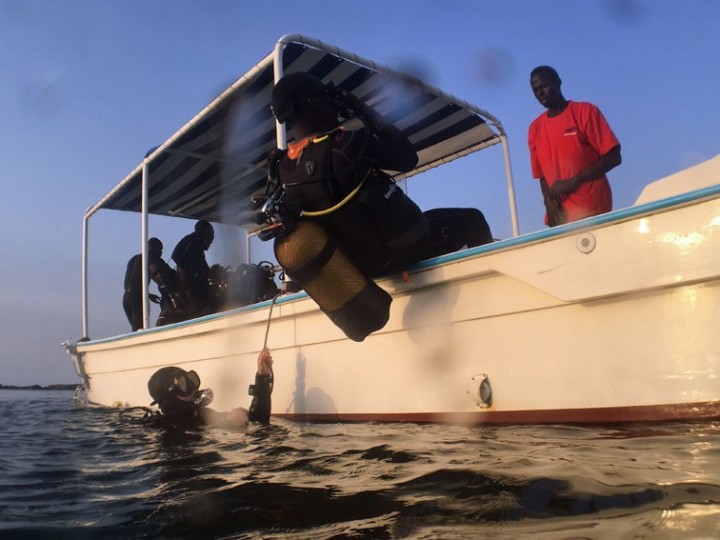
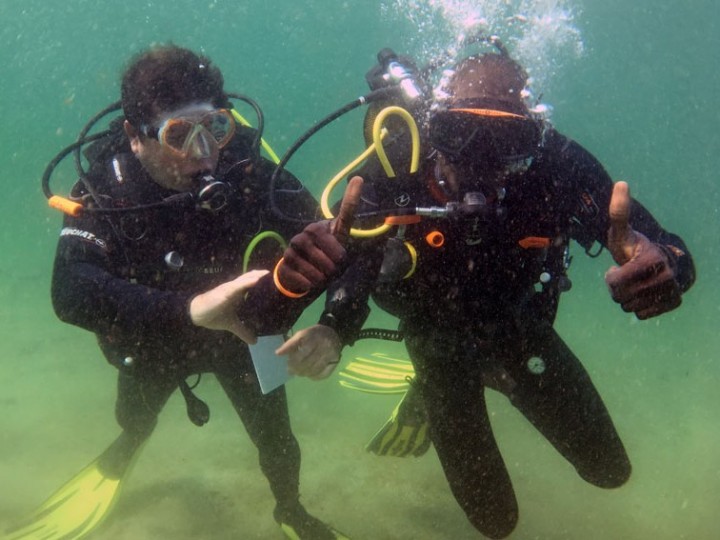
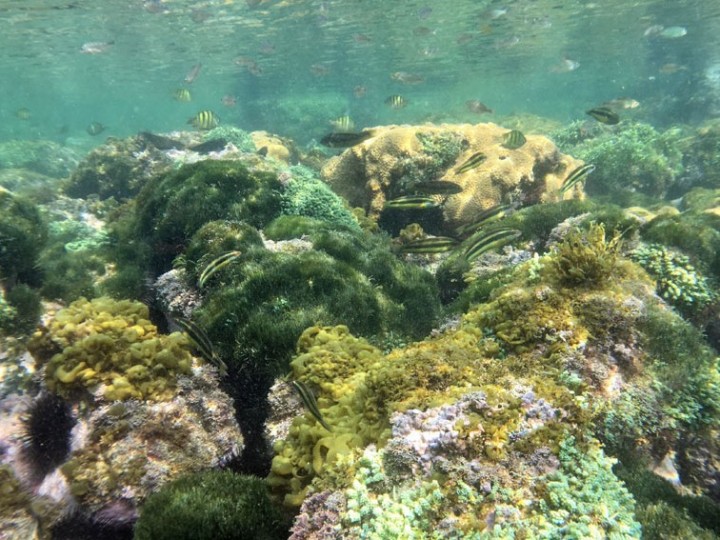
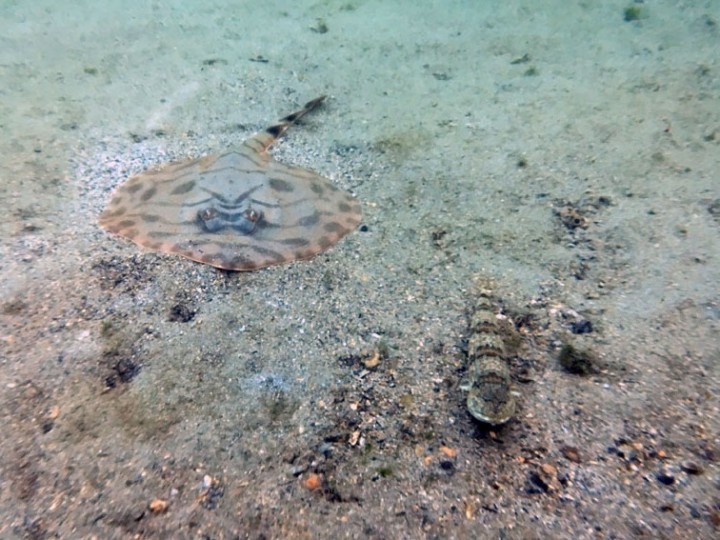
How will your donation help the project?
We are asking you to fund a scuba diving grant for each of the three (3) most-deserving students that will have been selected for their motivation and their future career plans from among 15 students having benefitted from our support in their first underwater dive. Each grant will allow training to be funded at PADI Open Water Diver level (9 sessions plus theory) and three (3) exploration dives. This training in the PADI system is recognized worldwide and will be valid in most diving centers.
The three (3) students selected will each contribute around 15% toward training costs and they will fund their own transport to get to the diving club located in N’gor.
The Barracuda Club Dakar has granted a reduction of 25% on trial dives and 15% on training, and has given free kits (flippers-mask-snorkel) for each student by its equipment supplier, AQUALUNG.
This training would not be possible if IUPA had not also provided supervisors and the institute is responsible for covering teaching costs.
Capitalizing on student training will begin once they leave the water, when they take up their pens to tell you about the species they discovered which intrigued or amazed them in particular, as well as share their ideas on the ways which West Africa can strengthen protection of its oceans.
Ecopartner for On your marks… study, dive, protect!
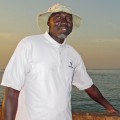
Professor Malick Diouf
Malick Diouf is a professor-researcher and director of IUPA. Well-versed in applied research and a great believer in practical training, he knows how to provide know-how to local communities to help them to manage their natural resources.
For example, he worked for many years with villagers from Delta Saloum (in Niodor, Fadiouth, Dionewar, Falia, Joal etc.) on shellfish management.
Passionate about applied research using traditional knowledge, he strives to enable students to test and put into practice their acquired knowledge. For him 'managing underwater eco-systems cannot be learnt only from books and in the classroom… it has to be experienced!
Updates
21.02.2018 › Babacar's diving diary
Thanks to diving, I was able to discover marine habitats with high biodiversity. Among all the species, my attention was drawn to a snail largely found in warm waters and temperate regions of the world. Called Cymatium perthenopum, this latter has a very nice color, and though it is edible, it is still not well-known in Senegal. At first sight, I thought I was looking at a rock as its shell was covered by other sea organisms that helped it to blend into the decor. But once "unmasked", it was difficult to detach it from its base as it was well stuck to it!
Definition
Also known as Hairy Triton or hairy monoplex in reference to the hairy periostracum the most external part of the shell. The Cymatium perthenopum belongs to the Annelida family (i.e. worms). The shell is rather massive, brown in color with wide and thick edges. My catch measured 116.60 mm high and 59.70 mm wide. The perimeters are barely segmented and angular, with fine longitudinal stripes. The columella (edge of the shell near the opening) is folded. The labrum (outer edge opposite the columella) is jagged
The off-white body of the animal is spotted with large black dots giving it an aesthetic beauty. When it retreats into its shell, only its operculum is visible (a corneous or calcareous lid through which the snail can close its shell), thus protecting it from predators.
My specimen was caught 14 m deep on the rocks, but the species is found on all types of sea depths, from tidal current areas to areas as deep as 150 m.
The Triton snail is a nocturnal predator; it feeds mainly on bivalves, other gastropods and echinoderms (a group of marine animals like sea urchin and sea star etc.). If I get to master my diving skills, I may perhaps be lucky enough to observe them at night!
Fertilization occurs internally. The female lays eggs for 4 to 6 days in a capsule in the form of cup and incubates them for 16/18 days. Larval development lasts half a year (175 days).
Spread out over a broad geographic marine area, the Triton snail is not a threatened species but its biomass in Senegal remains unknown since the species is not yet well-observed. For this reason, funds must be made available to researchers for the study of the aquatic fauna of Senegal, to know it in order to follow up on its evolution. Much remains to be done in malacology (the study of molluscs) in Senegal for a better management of our environment. This is motivating for me!
Importance
The magnificent Triton of Naples’ shell is used as a decorative object, but the species is also edible and tasty especially when grilled and spiced up or simply boiled!
Some studies on this species have shown its use as a bio-indicator of marine pollution such as the pollution by tributyltin (TBT). This biocidal substance that contains tin comes primarily from anti-fouling paints applied on ships. They were totally banned from use in 2008 (fortunately, because they were too harmful to aquatic life).Did you know that
Commonly used in art as a decorative object, our gastropod appears on some paintings because of its beautiful shell. This species is considered in some regions as harmful due to its predatory activity in oyster parks. Its harvesting in the West African sub-region is not so significant.
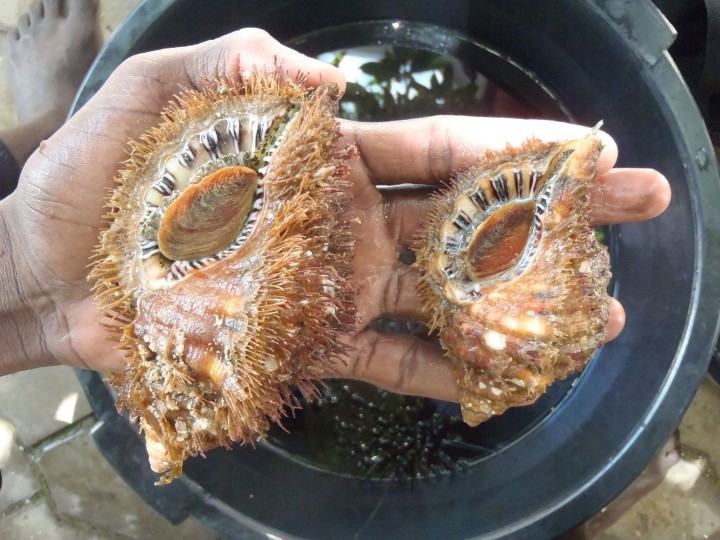
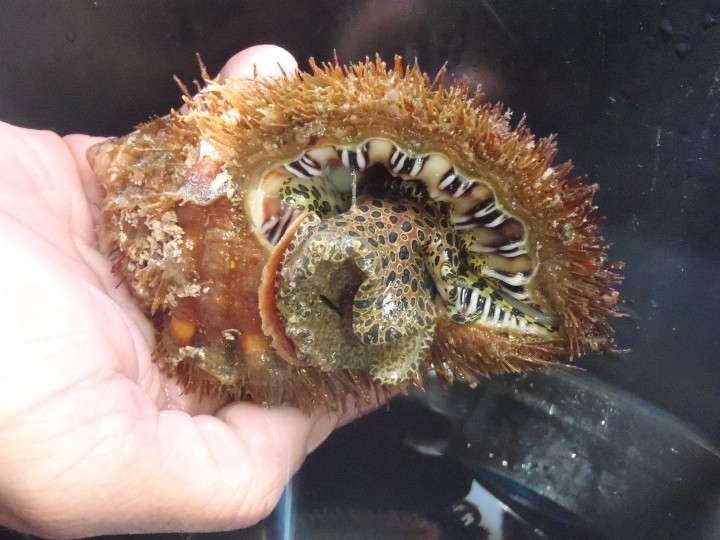
17.02.2018 › Amadou's diving diary
Living along Senegal’s coastline, I eagerly awaited the harvesting season for these balls of spines with an exotic taste. During our initiation to diving, I was struck by the diversity of urchins in the Bay of Ngor in Dakar. In fact, it was my first time of seeing Diadematids, a species that is totally different from those we are accustomed to seeing. For this reason, I have chosen to share this wonderful discovery with the Ecofund community. However, I vividly remember how these beautiful "tiaras" were removed from hands (mine) and have not forgotten yet their painful spines!
Definition
Urchins are marine invertebrates, a species belonging to the Echinodermata family (such as sea stars and sea cucumbers). These small balls covered with spines are called "Saukhaure" in Wolof. We know the Echinometra lucenter species because we pick and roast them often right on the rocks bordering the sea. However, the species that I dissected in the laboratory was harvested from a depth of between 10 meters and 16 meters in the north of Ngor island, and this was only possible through practicing diving, and I am very proud of myself!
Lucenter Echinometra and Eucidaris tribuloides are the most common species and they are characterized by short spines which are thick for E. tribuloides and more or less thin for E. lucenter. Unlike these, diadems (Diadema africanum and antillarum) are the least known sea urchins in Senegal and they are characterized by their long and thin spines which can measure over 10 cm. Diadematidae derive their name from their beautiful shape and their preference for warm waters, one reason why they are mostly found in the eastern part of the Mediterranean where they are a protected species. They are also abundant in the shallow depths of the eastern Atlantic (for example in Senegal and Cape Verde).
They feed by scrapping and shredding plants lining the sea bed with the help of their mouth fitted with special jaws called "Aristotle lantern". The sexes are separated, and fertilization occurs externally through the simultaneous release of gametes into sea water. To the naked eye, the distinction between the male and female is impossible.
As for the spines which I personally tested, the shortest are filled with a non-potent venom for humans. However, broken spines are more difficult to pull out and can infect a wound.
Importance
Today, there are only 800 species of sea urchins identified worldwide at different sea depths. It is important to conserve sea urchins as they are used as an important “biological indicator” for man. In fact, the larvae of sea urchins may carry deformities due to pollution, which will prevent them from reproducing thus causing a decrease in the local population. In addition, researches on the genetic composition of urchins are being carried out for the treatment of cancer. The sea urchin is a perfect laboratory specimen as its cells multiply in less than two hours against 24 hours in humans and with 70% of its genome being similar to the human genome (i.e. all the genes carried by the chromosomes of a cell). Studies at the Roscoff Biology Station, France, have also helped to highlight the A1 peptide which helps in fighting leukemia.
Some species of sea urchins are edible as seafood. These edible ones are harvested by hand, using a hook or a simple knife. The edible parts are the five reproductive organs (gonads). To reach these organs, the mouth and the digestive apparatus are removed. In Senegal, they are eaten grilled on almost all the beaches and remain a flourishing business managed in general by Lebou women.
Additional information
The tests (or shells) of dead sea urchins have a spangled design, which can be clearly seen in some species, and mainly in irregular urchins with the design showing in the form of a flower. This has turned them into aesthetic objects, sought by certain collectors or used by some as decorative objects, ritual objects or amulets. They are also used in the decoration of tombs or religious monuments, portraying a large symbolic diversity based on the people
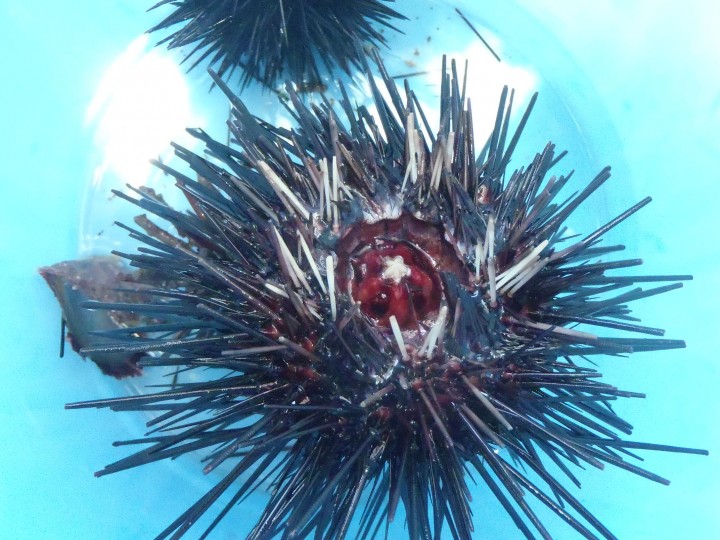

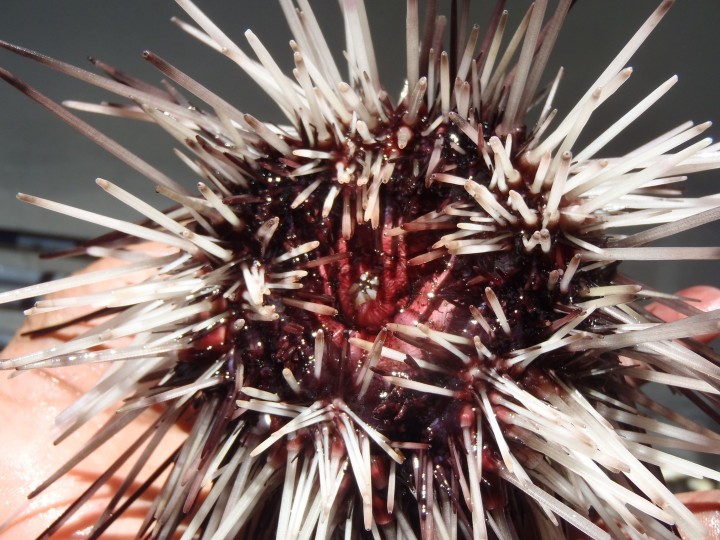
15.02.2018 › Fatou's diving diary
A humorist once wrote: "an oyster is a fish built like a nut," Pteria sp oyster, is something like that…
When I was five or six years old, I was picking sea shells on the shores of Dakar suburbs. I could never have imagined that there were living organisms inside these cockles.
It was after my diving ‘baptism’ that I had the opportunity to observe them in their habitat (scientifically called biotope). I have been fascinated by the way in which some bivalves (aquatic molluscs with two distinct separated parts that are more or less symmetrical), attach to rocks. As a natural base to many other living things (Cnidaria such as sea anemones, jellyfish, corals or other molluscs and algae), bivalves have developed a system of camouflage to escape their predators such as some boring gastropods (Netica SP) and non-borers (murex). This is what prompted me to choose the Pteria SP oyster, a species of the pearl oyster family. With its hiding system, the harvesting deserves special attention because for the uninitiated, it may go unnoticed…Diving has thus helped me tremendously in my scientific exercise!
Defiition
The Pteria SP oyster is closely related to the pearl oyster of the family of Pteridae and the Pteria genus. Its shell which can measure from 35 mm to 280 mm, is thin, fragile and can have a very variable form: oval, circular and sometimes very elongated on one of its sides, calling to mind the wings of a bird. Its hinge, the part connecting the two valves on the thickest side of the shell, has no tooth. The animal has no foot but a very developed adductor muscle running along the central part of the shell. It is this muscle that ensures the closure of the shell
The specimens collected were found at a depth of 12 m. They attach to rocks through a secreted bundle composed of a set of filaments or threads called byssal.
These bivalves are biofilters. They feed on food particles (organic and inorganic) suspended in the water.
The sexes are separated, but we have no precise information on their reproduction.
Apart from the pearl oyster, edible Pteridae are not, as far as is known, highly harvested.
Importance
Although many bivalves in this family can secrete pearls, the Pteria is not used for this purpose. Long confused with the oyster, and later with Saint James shell, the Pteria is mainly sold by women on Soumbédioune beach in Dakar. The species is eaten fresh and grilled. Sellers even attribute aphrodisiac powers to these shells!
Did you know that
In Senegal, the empty shells of this species are used for decorative purposes. However, some ethnic groups such as the Sérère use them for building "Bankos" (huts built with clay). Indeed, after burning the shells, the calcareous shells are used as a binder for the whitewash.
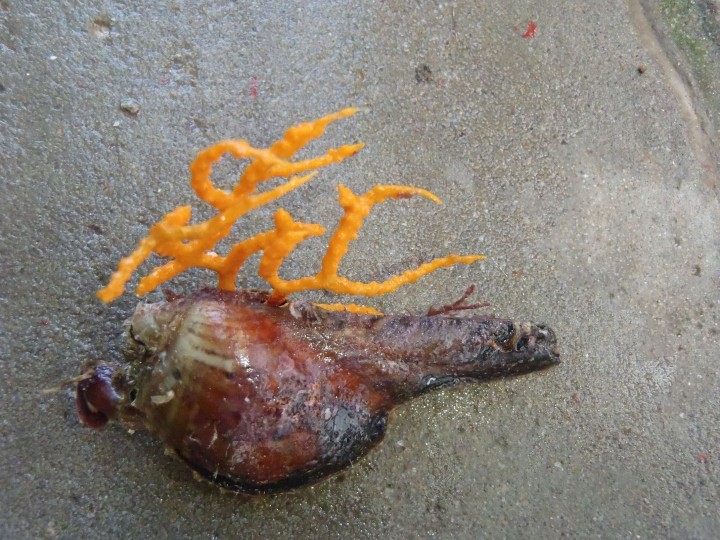
30.11.2017 › 15th project funded and accompanied by Ecofund
We are happy to announce the successful implementation of the project “On your marks… study, dive, protect!” This is the 15th project funded and accompanied by Ecofund.
The project was born thanks to the initiative of Professor Malick Diouf at the University of Dakar, his Msc. students in 'Aquatic Eco-systems Management' and thanks to the collaboration with the Barracuda Club Dakar.
Many thanks to all of you for your support and donations! Special thanks to the Rotary Club Dakar for filling the budget gap!
The project’s results are best resumed by the passionate scientific articles written by our three students freshly graduated at PADI Open Water Divers. The articles translate best how the opportunity of diving, and thus observing the natural underwater environment for the first time, has positively impacted their studies. During the diving sessions the students collected few specimen for further observation and study at the University of Dakar.
We invite you to visit our “Green News > Ecoblog” page and to read the articles on three specimen, of which you would not imagine the virtues and the utility for our oceans and our lives.
At the end of our journey “On your marks… study, dive, protect!”, it is also time to sit back and make an evaluation - we learned at least two lessons:
- The more a scientist “dives” into the natural environment, the more he gains know-how and proficiency. This seems obvious, however this is not the common practice during the 'Aquatic Eco-systems Management' studies at the Cheik Anta Diop University in Dakar. This first underwater diving training has been a pilot project and – to our opinion - a real success. We hope Professor Malick Diouf can capitalize on this success, so underwater diving training becomes part of the university syllabus to help students become future champions in the protection of marine ecosystems in West Africa.
- To be a scientist working on preserving our ecosystems is good, being a passionate scientist and communicating your passion is even better. This helps a lot to spread the knowledge and sensitize people to adopt an eco-responsible behavior.
During project implementation, our three students have demonstrated their eco-responsible behavior by participating actively in cleaning-up sessions of the N’Gor bay in Dakar in Senegal and its underwater environment. The cleaning-up sessions were organized by Julie, Nathalie and Franck from the Barracuda Club Dakar. For example, on the World Oceans Day, in less than 2 hours, 1 ton of garbage was collected, of which 650 kg on the beach and 300 kg under water!!! This is good but how much waste lies still on the bottom of our oceans? More than ever, our three champions will need to develop ideas on the ways how West Africa can strengthen protection of its oceans.
During project implementation we also encouraged the students to demonstrate their ownership by co-funding this pilot project by their university mates. Crowdfunding is not yet an established practice in West Africa since contributing 10.000 Francs CFA (15 euros) represents a lot of money for a student in Senegal. Therefore, the fact that they succeeded to raise among their university mates 300 Euros is an encouraging step. Though it is a partial amount (17% of the project budget), the symbol is important since the University and the students want the underwater diving training to become an integrated part of the master course in 'Aquatic Eco-systems Management’. Alike Fatou, Amadou and Babacar, the students will need to merit the diving training and also prove its utility for science and the protection of oceans.
Last but not least, we want to congratulate Fatou, Amadou and Babacar and wish them all the best for their future as professionals in protecting the aquatic environment.
Enjoy their articles, which may give you the stimulus to explore the underwater world in West Africa.
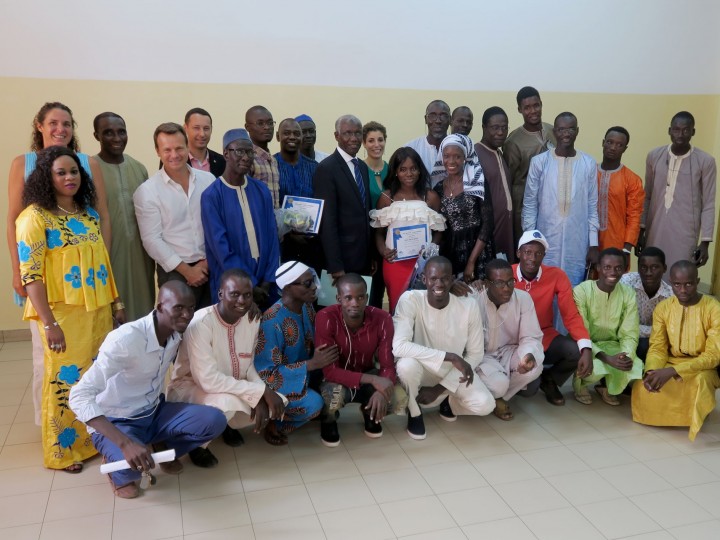
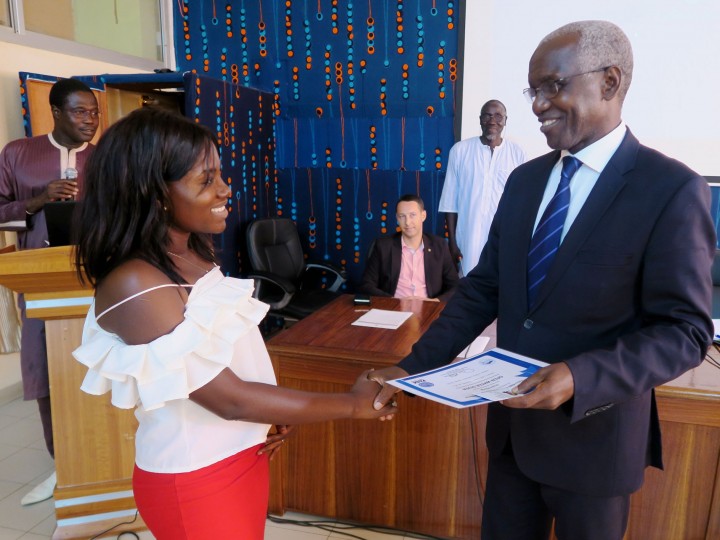
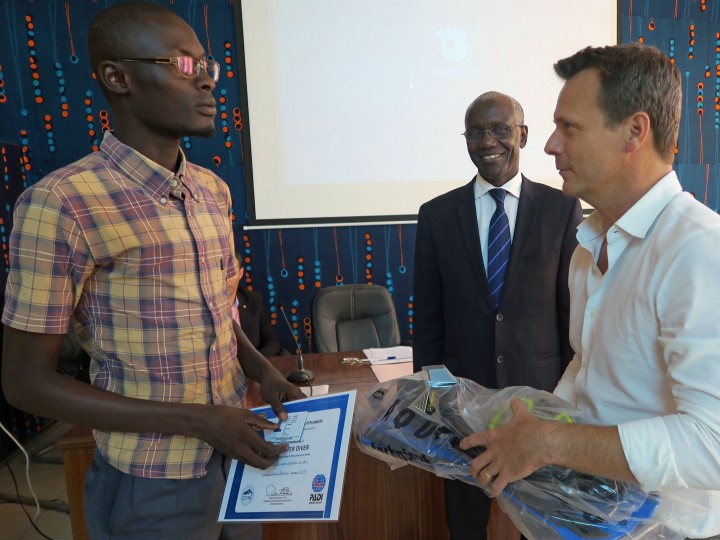
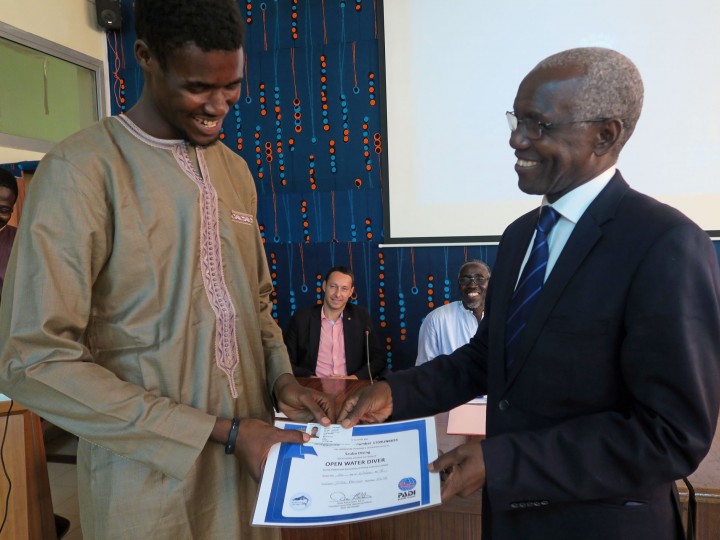
16.09.2017 › International Coastal Clean-up
When?
Thursday 16 September, from 9 a.m. till 12 a.m.
Where?
Join us at the N’Gor beach in front of the Black&White club in Dakar, Senegal
Divers please call 77 099 97 66 (Senegal)
What?
Not talking – acting!
Clean-up of the beach and the underwater environment of the N’Gor bay.
If you cannot join us, with Ecofund, Barracuda Club and the IUPA you have still the opportunity to act in a concrete manner by supporting our champions Fatou, Amadou and Babacar by making donation to the project “On your marks… study, dive, protect!
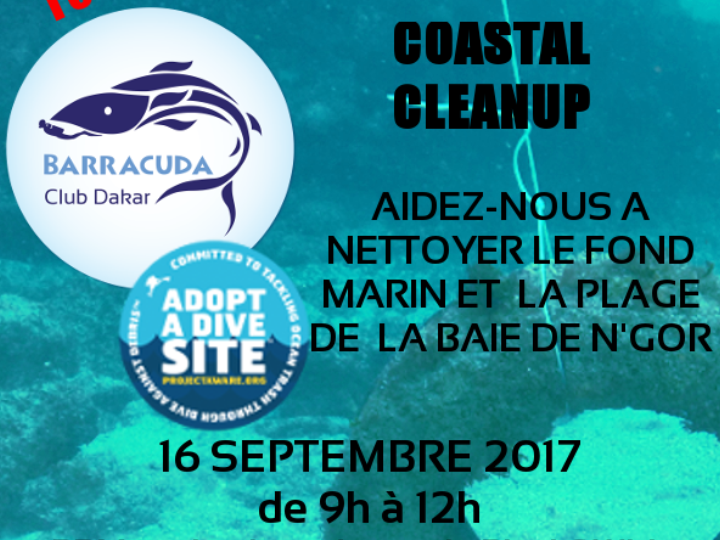
11.06.2017 › Our oceans, our future!
The “World Oceans Day” started with a Conference at the University Fishing and Aquaculture Institute IUPA in Dakar, Senegal with a participation of more than hundred students and of course our 3 champions, Fatou, Amadou and Babacar.
Fatou, Amadou and Babacar, made a surprise: they performed a sketch they have written in order to alarm their fellow students about the negative impact of plastic pollution, see the video below.
Thus, the conference was a very reach exchange of expertise and experiences on the pollution of our oceans and in particular on how to reduce or - even better – avoid it !
From talking to acting:
From 4 p.m. divers from the Barracuda Club Dakar, our 3 champions, Senegalese fire fighters, and surfers, BRI action and JFD, the N'Gor Island Surfcamp and "l'Amicale des amis de la baie de N'Gor", all together fifty volunteers came to the N’Gor bay in Dakar, Senegal, to clean-up of its beach and its underwater environment.
In less than 2 hours, 1 ton of garbage was collected, of which 300 kg on the beach and 650 kg under water !!!
It was a perfect opportunity for our 3 champions from the IUPA, just certified divers, to participate in the cleaning and thus to demonstrate their engagement for the protection of our oceans.
We are very curious to learn about the species they discovered, which intrigued or amazed them in particular during the diving training, as well as share their ideas on the ways which West Africa can strengthen protection of its oceans.
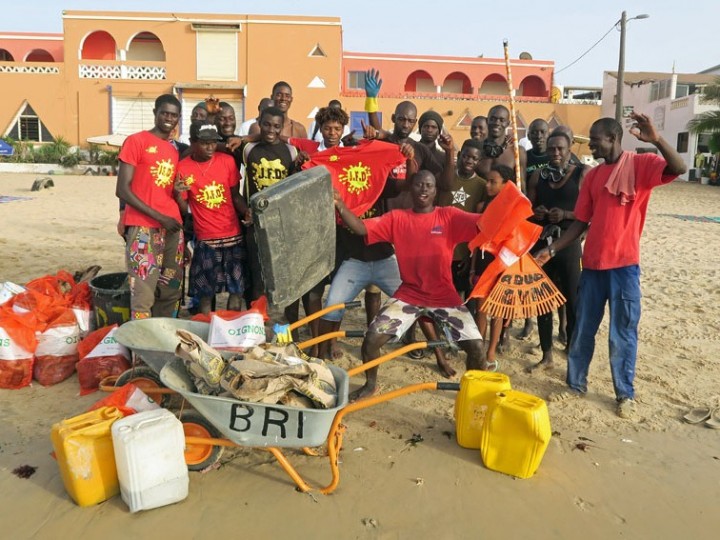
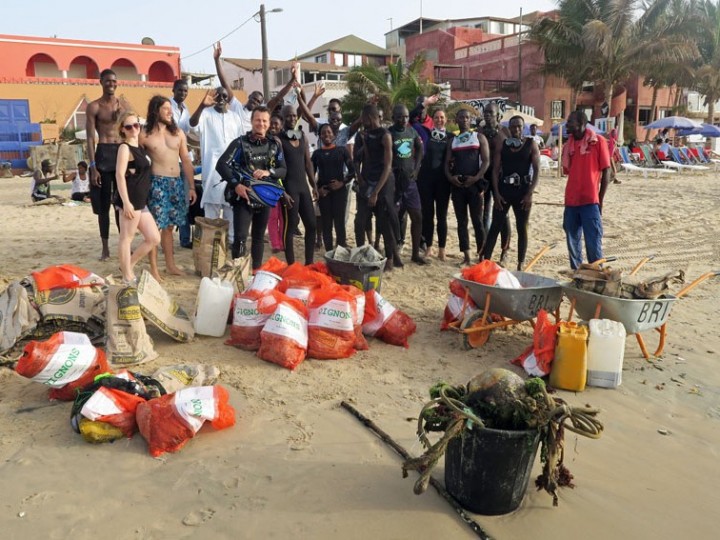
05.06.2017 › World Oceans Day
When?
Thursday 8 June
Where?
From 9 a.m. join us for the conference at the University Fishing and Aquaculture Institute IUPA in Dakar, Senegal
From 4 p.m. join us at the Barracuda Club Dakar N’Gor for clean-up of the beach and the underwater environment of the N’Gor bay in Dakar, Senegal
What?
Not talking – acting!
If you cannot join us, with Ecofund, Barracuda Club and the IUPA you have the opportunity to celebrate the World Oceans Day in a concrete manner by supporting our champions Fatou, Amadou and Babacar by making donation to the project “On your marks… study, dive, protect!
Your personal Happy World Oceans Day Gift!
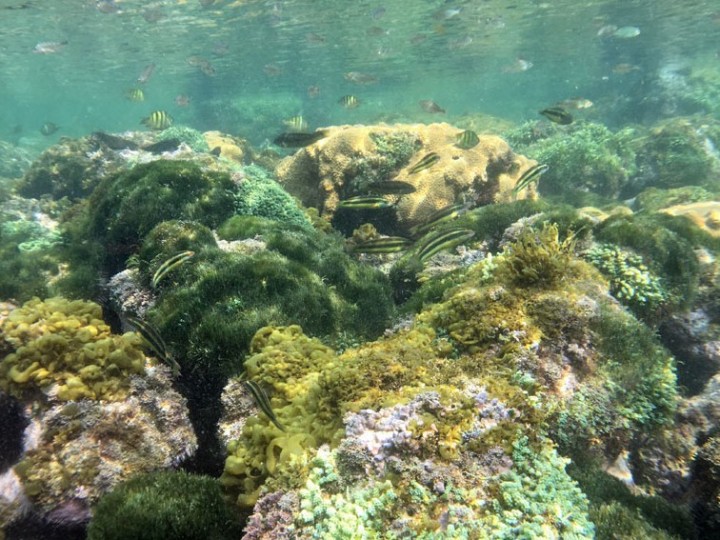
27.05.2017 › Please welcome Fatou, Amadou and Babacar our future green champions
We are proud to introduce to you the team of three MSc students in 'Aquatic Eco-systems Management' at IUPA (the University Fishing and Aquaculture Institute). Fatou, Amadou and Babacar have been chosen among 15 fellow students for their strong motivation and skills to be trained in scuba diving and so to become future champions in the protection of marine ecosystems in West Africa.
FATOU KINE GUEYE
I am 25 years old and I am one of the few women in the master programme. If you consider that I am not a great swimmer, you will understand that I need to be very motivated to do this dive training, which is a frankly speaking a big physical challenge for me ?
I found my vocation studying earth and life sciences in the high school, and I wanted to continue on this path. This is why after my bachelor’s degree at the Université Cheikh Anta Diop in Dakar, I enrolled for the Master at the IUPA for two reasons: 1) I had always been passionate about discoveries, in particular in the water, and I also wanted to specialise in environmental protection and more specifically in marine protected areas, and 2) I heard a lot about the very good reputation of this institute.
My impressions under water?
I had an extraordinary experience during the first dive: It was exactly like in the documentaries! I loved the diversity of colours and forms of the seaweed, and the manner with which it held on to the rocks. Also, I discovered a very colourful species that I liked a lot: a nudibranch! (see photo)
Wow, it was an experience full of discoveries.
I look forward to my next diving session. I think this is really motivating for my studies and I can feel that, comparing with the other students; I have the chance to "live" the topic of my studies.
This is why I thank you once again for your support!
AMADOU SENE
I am young (26 years old), passionate about my studies, and I think I was selected for this project by the jury because I am one of the most motivated to do these dives!
Up to my undergraduate studies, I was fascinated by the courses of nature sciences, and among them ecology: you study all the relations that can exist between the different elements of the environment and you understand the need to have a good understanding about them. When I learnt in our zoology course that the vast majority of the animals of the earth are water organisms, something inside me decided to specialise in ecology of marine ecosystems. I think that later, when I am an expert, I would like to be very useful in this field where there still is a lack of information on the countless species and the situation of our coasts. This is a real challenge for Senegal. The health of our fishing industry depends on the health of our sea, and this is why we must avoid the degradation of our environment.
What did you experience under water during your first dive?
I had an extraordinary feeling under water. My initial fear was quickly put aside when I encountered the first different species which we only know from our books, such as sea anemones or the pufferfish, which besides was the topic of my study project. I was also impressed by the almost magical ability to breathe underwater!
For all this and it is just the beginning, I would like thank you for your support. It is an immense value for us to succeed in our studies.
BABACAR SANE
I was born in a village in the department of Podor on February 10, 1992 (25 years). This is where I learnt to swim.
Studying and working in marine ecology has always been my dream. I would like to participate in the management of the marine ecosystems. This is why I had chosen the program at the IUPA which allows me to deepen my scientific knowledge. I would like to know more about the impact of pollution on the environment of the sea that, in my opinion, must be well managed given its importance for the Senegalese economy because of the fisheries, but also for our own well-being. As a child of the river of Podor, I want to fight against the degradation of the water ecosystems."
And what were your first underwater impressions?
When I dive into the sea for the first time, it was extraordinary and fantastic. For the first time in my life, I saw a real school of fish and seaweed and many other beautiful things! Usually I see these things only in videos. I thought: "This is great! I breathe underwater!" It was an experience that I will certainly not forget!
Thank you for making this possible !
